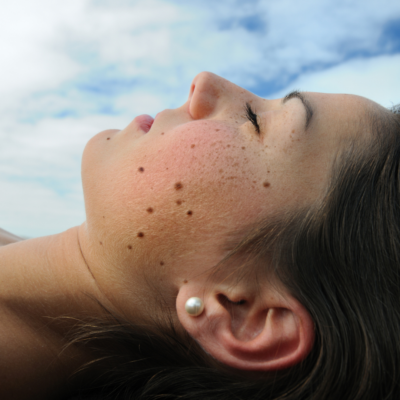
Do’s and Don’ts of Skin Healing After Stitches
Reviewed By Rebecca Chen, MD
Whether it’s from surgery or a mishap, at some point, you may need stitches aka sutures. When you do, you can count on your board-certified California Skin Institute dermatologist to provide you with expert follow-up care to guide your healing process and help minimize scarring. Even so, it’s good to know the basics of how your skin heals and what you can to do to help.
All Stitched Up and Ready To Go? Not Exactly
You may feel a euphoric sense of relief when the thread of your stitches is knotted and snipped. But now you’re onto the next phase of the process. You need to know how to care for your stitches. It’s vital to your skin’s healthy healing.
Think of the thread of your stitches like the thread that holds your clothes together. You want to make sure things don’t come apart at the seams.
After your stitches are in, you’ll get instructions on how to care for them and told when (and if) they will be taken out. It could be as little as a few days and probably no more than a couple of weeks. It depends on how deep your wound was, where it was and what type of stitches you receive. Absorbable stitches don’t need to be removed by a health care provider, as they are made of material that the body can absorb. However, these types of stitches may dissolve too quickly for some incisions to completely heal, and you may receive the more traditional type.
Healing Begins Under Your Skin
Your skin is an intricate structure composed of the top epidermis and underlying dermis, including a layer of fat — your body’s natural insulation. These layers serve to protect your internal organs and to help prevent dehydration.
As the body’s protective shield from the outside environment, skin is vulnerable to injury. Wound healing evolved as a crucial process for survival. It’s a complex process involving blood clotting and the creation of new skin cells.
Blasting Off to Healing with Fibroblasts — The Good, the Bad and the Ugly
Some species possess the ability to perfectly regenerate skin. We humans are not as lucky. Producing new skin tissue is more complicated for mammals, including humans. Typically, it results in scar tissue. That’s because fibroblasts — the worker bees of your body’s wound repair system — do their job with efficiency, as their top priority is your safety, not aesthetics. The job of the fibroblasts is to patch up injured tissue as quickly as possible to protect you. How the finished job looks is not part their job description. As a result, the new skin tissue may be thicker than regular skin tissue.
Scientific research continues to explore how to improve wound healing to eliminate scar formation. But, at present, it is best to focus on the healing process itself. Should scar tissue form as the wound closes, give it time. Some scars may disappear by themselves. If a scar persists and its appearance irks you, your board-certified CSI dermatologist can suggest the best procedures and treatments to minimize it. They can determine which of CSI’s many laser options might yield the best results for your situation.
You can also apply scar care products to the area. By pairing Scar Recovery Gel and Scar Care SPF 45, you provide a breathable, protective shield over wounds immediately post-procedure and help to hydrate, soothe, fade, and smooth the texture of scars.
What Not to Do and What to Do After Stitches
Let us now praise stitches. Not only do they promote skin healing and stop bleeding, they also actually reduce both the risk of scarring and the size of any scar that occurs.
There is no guarantee as to whether a permanent scar will form or what it will look like once the skin heals. Following your CSI dermatologist’s instructions are important to achieving the best outcome.
These instructions will most likely include:
Don’t strain your stitches.
Steer clear of all activities that could strain the site until you’re done healing. Even exercise like yoga can put too much pressure on the stitches.
Don’t swim.
Wait until your stitches are out before you go into the pool or ocean.
Don’t drink alcohol.
Its ability to interfere with blood clotting—perhaps good for those with potentially dangerous blood clots in their arteries—is not good for wound healing.
Don’t go out in the sun with the wound exposed.
After it is safe to remove the surgical dressing, protect the area from the sun with a broad spectrum sunscreen. Newly formed skin tissue is very vulnerable to discoloration from sunlight.
Don’t scratch the stitched area.
No matter how much it itches, resist the urge to scratch. Instead, treat the itch. Use an over-the-counter antihistamine or anti-itch cream.
Do keep the area covered and dry.
Check with your doctor about when and how to clean the stitched wound. When you shower keep the area out of the shower head’s spray. Avoid hot tubs and saunas.
Do change the dressing as advised.
Be sure to stock up on whatever type of bandaging is recommended.
Do contact your doctor’s office if there’s any sign of infection.
Reddening? Swelling? Pus or bleeding? Call your physician to check on the wound.
Do check on lightly applying an antibiotic first aid ointment to the wound.
Remember, easy does it. Ditto for gently massaging the area once the stitches are gone. This may help soften and flatten any scar tissue.
Do be mindful of consuming a nutritious diet and staying hydrated.
Plenty of fruits, vegetables and lean protein. Adequate calories. Perhaps a multi-vitamin multi-mineral supplement once a day to ensure a balanced intake of micronutrients.



 / 291 Reviews
/ 291 Reviews